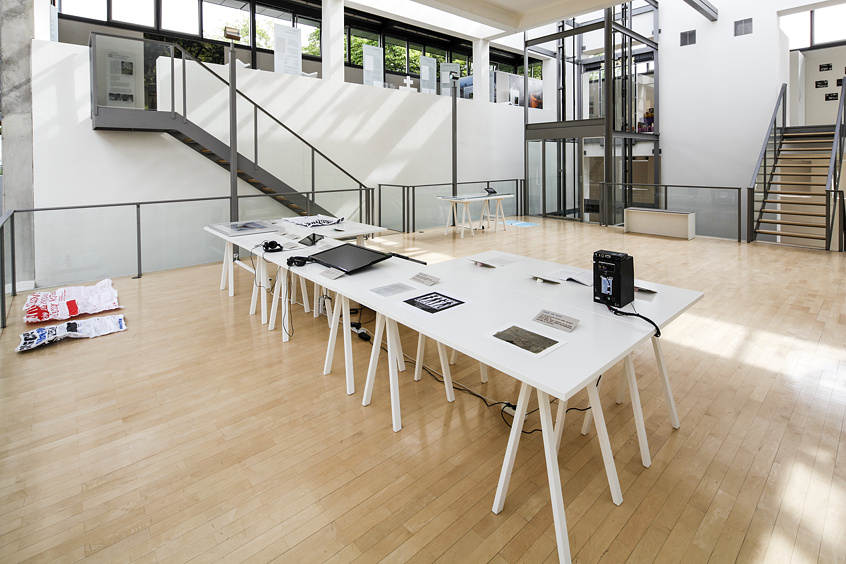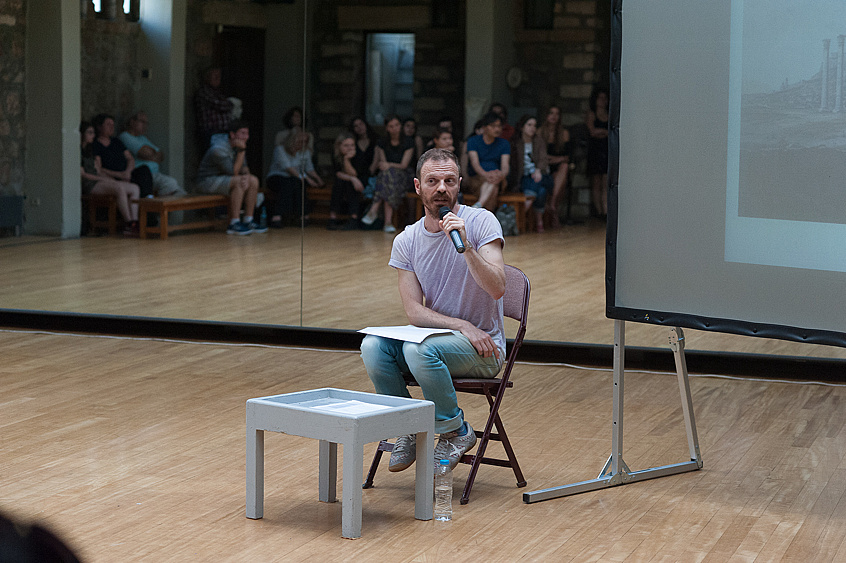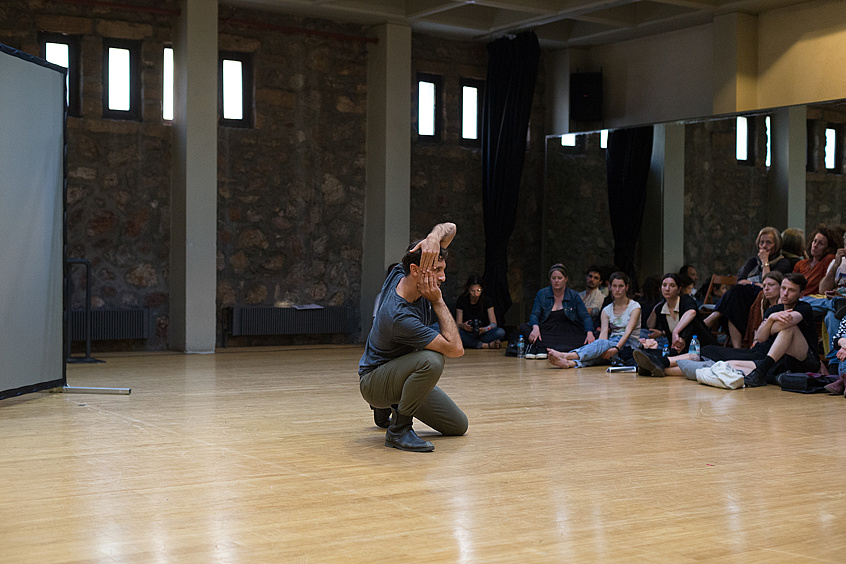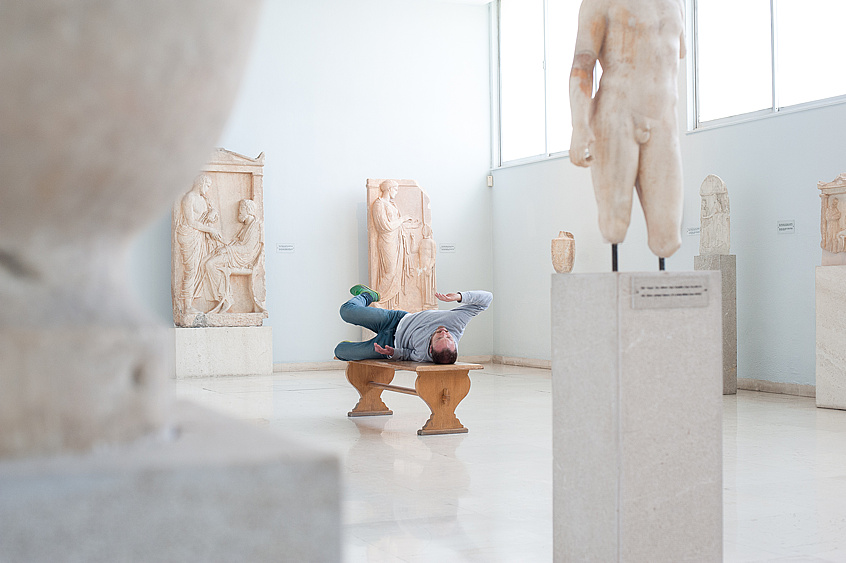Collective Exhibition for a Single Body, performance, Archaeological Museum of Piraeus, documenta 14
Collective Exhibition for a Single Body is proposed by documenta 14 curator Pierre Bal-Blanc in collaboration with the Greek choreographer Kostas Tsioukas, and performers and dancers Myrto Kontoni and Tassos Koukoutas. A body is dissected into distinct parts, as in an anatomical study. Each part, limb, muscle, or organ becomes the medium of an action overseen by the curator and the choreographer and created by a selection of documenta 14 participating artists who work in a variety of disciplines. The proposed gestures are translated into scores and performed by three dancers among the visitors to the museum in an aleatory fashion, continuously repeated.
Scores by Pierre Bal-Blanc, Marie Cool Fabio Balducci, Yael Davids, Maria Eichhorn, Anna Halprin, Maria Hassabi, David Lamelas, Prinz Gholam, Ashley Hans Scheirl, Kostas Tsioukas, Annie Vigier & Franck Apertet (les gens d’Uterpan), Lois Weinberger, and Artur Żmijewski (2017)
Collective Exhibition for a Single Body
Pierre Bal-Blanc, Athens, August 2015
(Score based on an earlier version from 2011)
A body is dissected into distinct parts, as in an anatomical study.
Each part (limb, muscle, or organ) becomes the medium of an action overseen by a supervisor and created by different invited authors. The authors can use the same limbs, muscles, body parts, or organs (arms, torso, fingers, legs, genitals, eyes, etc.) and their function (to speak, press, swallow, spit, etc.); the supervisor should, however, see to it that the entire body is used and the maximum variety of actions undertaken. Authors do not consult each other. The supervisor is responsible for determining the combination of gestures. Each author must determine a gesture or action (simple or complex) and transcribe it as a score. Each action should be reversible. Gestures or actions can subvert the normative behavior of the body in public, but they must also aim to demonstrate the perverse character of the norm itself, as society imposes it on the body.
Each score should already exist or be conceived as an independent entity; its duration or repetition should not be excessive so as not to exceed the duration of the other scores (when executed independently, as the project allows in certain circumstances, the action can be executed indefinitely). The number of authors is not limited; the higher the number, however, the more difficult it becomes to memorize all the gestures, which, in turn, requires engaging qualified persons to execute them. The series of gestures that make up Collective Exhibition for a Single Body should not be performed one time alone, but should be repeated at least once during the performance. Each performer whose body serves as the medium in which the project takes place (dancer, life model, actor, or individual) must be capable of following the score from memory. Gestures or actions should be easy enough for anyone to perform. In the case of amateur performers, however, the number of scores can be limited. Amateur performers can thus choose an extract of the exhibition and arrange the chosen scores in an alternative order as they wish.
When Collective Exhibition for a Single Body is staged in an interior or exterior public space by an unlimited number of paid professional or amateur performers (dancers, life models, actors, etc.), the performance should either take into account or resist the given context; and can take place within fixed parameters or follow a given schedule and itinerary. In all cases, performance should happen among the audience in an aleatory fashion; during each performance, the supervisor should make sure that the tempo remains aleatory, appearances unpremeditated, and the repetition continuous.
The project is planned to be premiered or presented and commented in an anatomical theater or in a comparable configuration. This special public performance will entail as many persons performing each gesture, at a slow pace, as there are contributing authors. Each member of the group, aligned in a row, a circle, or otherwise, will take turns performing her gesture. Finally, a member of each sex will perform the entire series of gestures from beginning to end (the entire group are then free to perform the succession of gestures, in entirety or in part and at varying speeds, while progressively putting their clothes back on, if they are naked, and eventually mixing with the audience).
Persons who have learned the various gestures or actions can perform Collective Exhibition for a Single Body in part or entirety, naked or dressed, in exchange for a fee, in the case of a commission in an interior or exterior public space by a third party, or alternatively, wherever they please, on a voluntary basis. As with the “premiere,” performers can perform the gestures or actions in their entirety and/or in succession or simultaneously with others who alternatively perform a single gesture by each author, in which case the combinations can in principle be long in duration. In cases where the score is made available to the public, participants are free to adapt it as they wish, in the form of a contamination of gestures.
Collective Exhibition for a Single Body is also presented in the form of a general score, which also provides a general explanation of the project. The exhibition is composed of a set of scores for individual gestures or actions classified by author in a given order, which nevertheless remains open to other combinations. The score can include written, visual, or time-based notation. Each gesture or action can be presented as a separate performance, in which case information on the author and the context of the collective exhibition from which it originates should be made available.
The performance of each Collective Exhibition for a Single Body can be subsequently restaged either by engaging performers or freely by anyone; in both cases information on the authors and the context in which the exhibition was conceived should be given.
The number of Collective Exhibitions for a Single Body is not limited; each exhibition should, however, vary as much as possible in the choice of authors, who should document the exhibition in the form of a published score, to be made available to anyone.
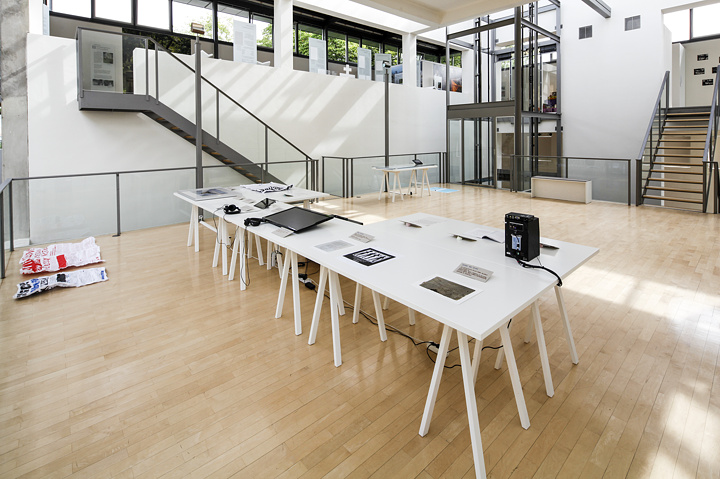
Collective Exhibition for a Single Body, installation view, Museum für Sepulkralkultur, Kassel, documenta 14, photo: Liz Eve
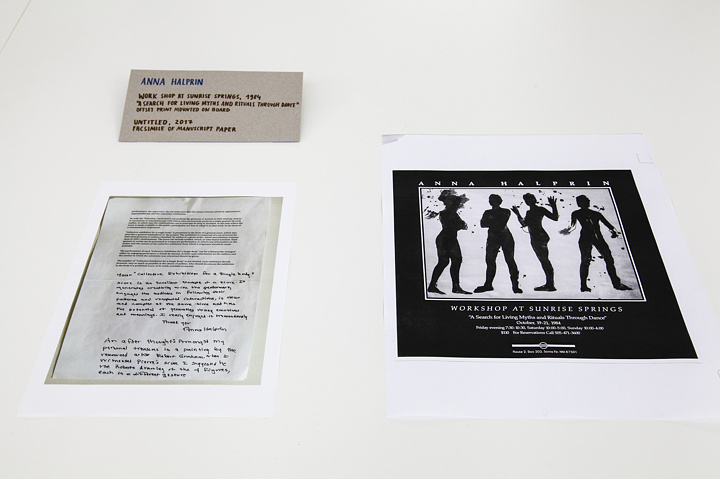
Collective Exhibition for a Single Body, installation view, Museum für Sepulkralkultur, Kassel, documenta 14, photo: Liz Eve
The first presentation of Collective Exhibition for a Single Body has been realized in the frame of documenta 14 and performed every Friday to Sunday from 12 to 2:30 pm at the Archaeological Museum of Piraeus from April 6 to July 16. From June 8 to September 17, 2017, all scores are presented at the Museum für Sepulkralkultur in Kassel together with material related to the performance.
Curated by Pierre Bal-Blanc with the assistance of Eleni Riga and Lou Forster. Commissioned by documenta 14 and coproduced by the Kadist Foundation and Kontakt: The Art Collection of Erste Group and Erste Foundation.





